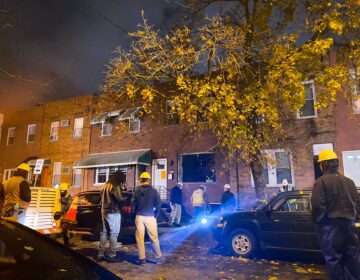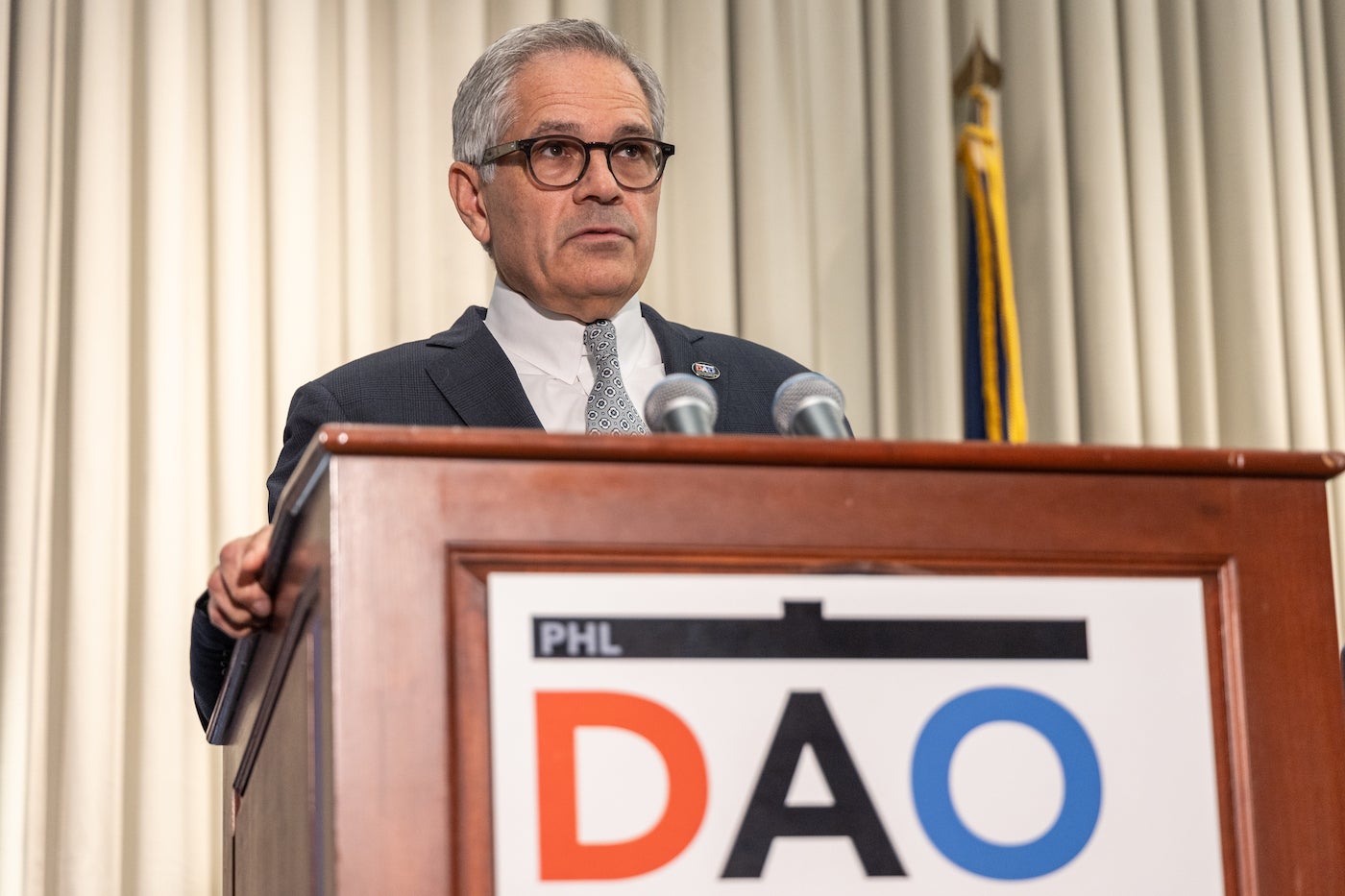Opioid crisis linked to highest Philly homicide rate since 2012
Philadelphia police officials cite issues associated with opioid abuse as part of the reason the murder rate is climbing.

Capt. Sekou Kinebrew, a Philadelphia police spokesman, says fewer people were shot in 2017, but more victims died as a result of a shooting. (Dana DiFilippo/WHYY)
In trying to explain why Philadelphia will cap the year recording the highest homicide rate in five years, Philadelphia Police Department officials are confronting one key area of concern.
“The opioid crisis,” said Capt. Sekou Kinebrew, referring to an epidemic that, once the count is finalized, is expected to claim four times more victims than violence does.
“Clearly when there’s a lot of money to be made, there’s competition over territory and over turf. That has contributed to some of the gun violence,” Kinebrew said.
Police department statistics show that parts of Kensington, considered the epicenter of the city’s opioid epidemic, overlap with some of the city’s most dangerous areas, the 24th and 25th police districts. Around one out of four of all homicides this year occurred in those sections, officials said.
Jordan Hyatt, a professor in Drexel University’s Department of Criminology and Justice Studies, said that given many other complicated factors — including the cyclical nature and randomness of violent crime — the opioid crisis cannot be viewed as the sole culprit for the homicide surge.
Nonetheless, he said it should not be discounted in conversations about the city’s murder rate.
“It will take some time to unpack it, but it’s not an unreasonable hypothesis in light of the evidence we see here in Philadelphia,” Hyatt said. “But attributing it in a causal manner will take more time. We can say it looks like a concerning association right now. “
Whether related to the drug trade or some other dispute, shootings played a large part in the violent deaths of the 312 people killed as of Thursday in Philadelphia. It is not just the highest number of slayings since 2012, but it is also a 13 percent jump from 2016.
Curiously, some other indicators of violence this year — including the number of people who were struck with bullets — are down. Records show that 1,212 people in Philadelphia have been shot, nearly 5 percent drop from the same time period in 2016.
“So, fewer people were shot, but more people that got shot died as a result of a shooting, which is peculiar,” Kinebrew said.
In the face of a recent rise in homicides, criminologists are quick to point out that Philadelphia’s murder rate is still down sharply from the 1990s when the city routinely logged more than 400 homicides a year.
Philadelphia has about 20 murders per 100,000 residents, a rate higher than the national average but well below Detroit and Baltimore, where the per-capita murder rate is double Philadelphia’s level.
Kinebrew said the department has established a new intelligence unit tasked with intervening in neighborhood beefs before there is a deadly escalation.
“It’s tough to predict, in general, to get in front of someone trying to hurt someone else, because we can’t read minds,” Kinebrew said. “But the area that we can address is the retaliatory violence.”
The department has also assigned more beat cops on foot and bike in neighborhoods, with police officials estimating that an additional 370 officers will be newly on patrol by next fall.
Kinebrew said the new officers are helping reverse a months-long recruitment shortfall police officials faced last year, when police staffing hit a two-decade low.
“They’re in the academy now,” Kinebrew. “And when they’re out, we’ll have an additional 370 in the community. We can’t underestimate boots on the ground.”
Another goal for 2018, Kinebrew said, is to set up a new unit in conjunction with the district attorney’s office and the court system to focus exclusively on firearm investigations and prosecutions.
“It’s a small percentage of people involved in the havoc that you see with the drugs and violence,” he said. “And we need to get those individuals off the street.”
WHYY is your source for fact-based, in-depth journalism and information. As a nonprofit organization, we rely on financial support from readers like you. Please give today.




